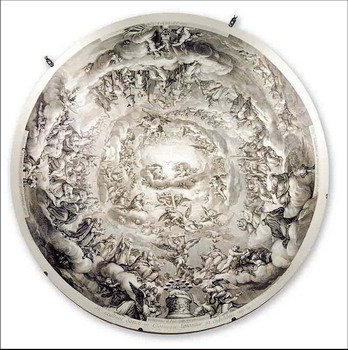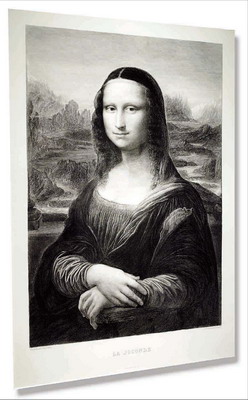Shanghai Daily News
Among the gifts sent by Louis XIV to the Emperor Kangxi more than 300 years
ago were prints made from copper engravings. Wang Jie reports on a similar
collection sent by the French government on display in Shanghai.


Two of the copper etching prints on display at the
Shanghai Art Museum. The exhibition, entitled "Chalcography of the Louvre Museum
¡ª Four Centuries of Prints in France,¡± is part of ¡°The Year of France in
China¡±and features works from Louvre Museum in Paris and the Reunion des Musees
Nationaux. ¡ª Shen Kai
What happens when art and applied technology meet? Find out the answer at the
exhibition that is currently running in the Shanghai Art Museum which is
entitled "The Chalcography of the Louvre Museum - Four Centuries of Prints in
France."
The Shanghai exhibition is the result of a joint effort by the Louvre Museum
of Paris and the Reunion des Musees Nationaux. It will give local art lovers the
opportunity to discover the techniques involved in the art of etching on copper
plates which developed and rapidly expanded in Europe during the reign of Louis
XIV, the "Sun King."
Emperor Kangxi (who reigned from 1661 to 1722) of the Qing Dynasty
(1644-1911) may have been the first Chinese to appreciate the new and
specialized art form.
In 1687, Louis XIV sent Jesuit missionaries to Emperor Kangxi's court in
Beijing. They brought prints from "The King's Cabinet" depicting scenes from
Louis XIV's reign and Emperor Kangxi was delighted by the clarity and precision
obtained through the process of copper engraving. At that time, Chinese artists
excelled in wood engraving.
As part of "The Year of France in China," the Louvre Museum and the Reunion
des Musees Nationaux have brought nearly 200 prints and engraved copper plates
to Shanghai illustrating the wealth and range of the Louvre Museum's
chalcographic collection.
The word "chalcography" means "writing on copper" in Greek and requires a
long series of operations in which the artist's final etchings on the surface of
the copper plate will become ink receptacles for printing.
Although other sections of the Louvre Museum are famous around the world, its
collection of copper plates is less well-known. The collection was created and
added to by the kings of France from 1667 to 1789 when it was seized during the
French Revolution. Napoleon I later entrusted the collection to the Louvre
Museum.
Thanks to government-funded acquisitions, the chalcography section of the
Louvre Museum now has more than 13,000 copper plates.
"Perhaps this exhibition will reflect at least part of the riches of the
collection," says Li Lei, curator of the Shanghai Art Museum.
Date: through October 16, 9am-5pm
Address: 325 Nanjing Rd W.
Admission: 20 yuan
Tel: 6327-2829



